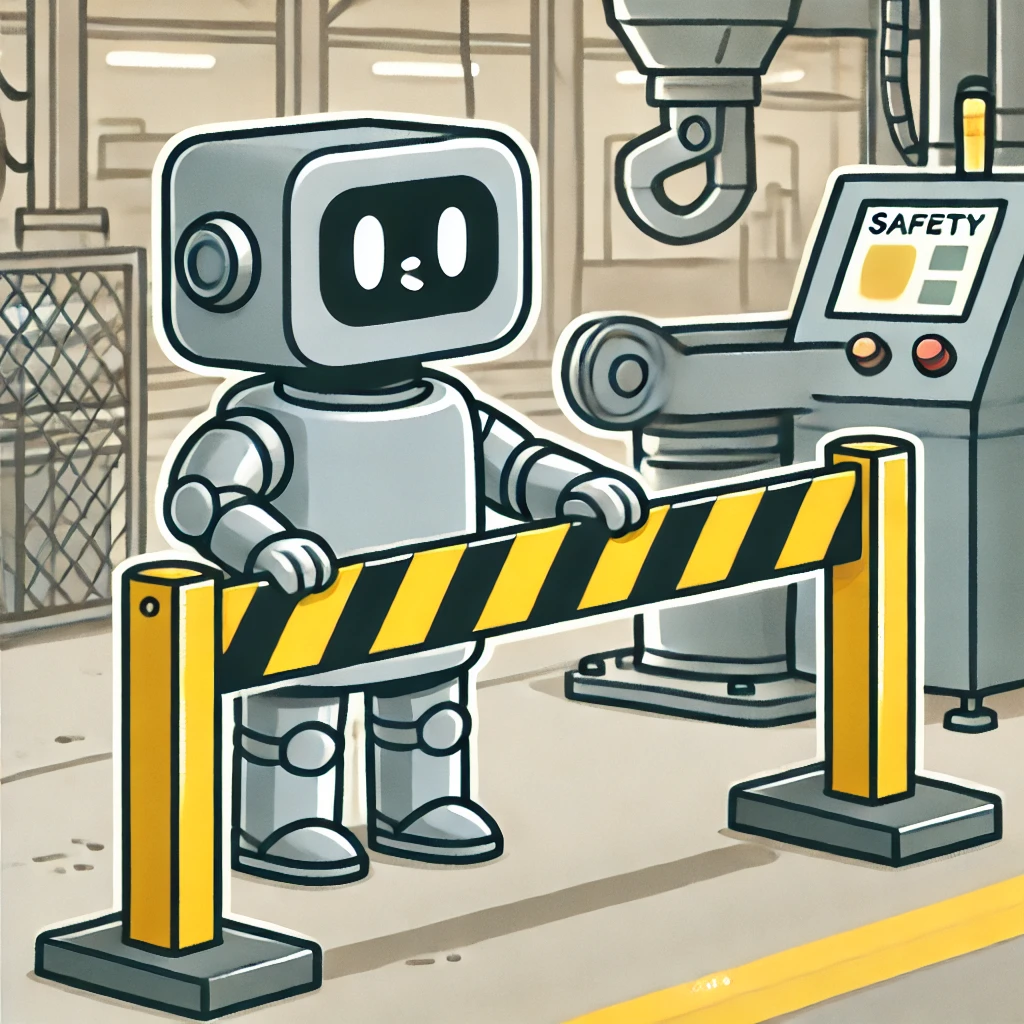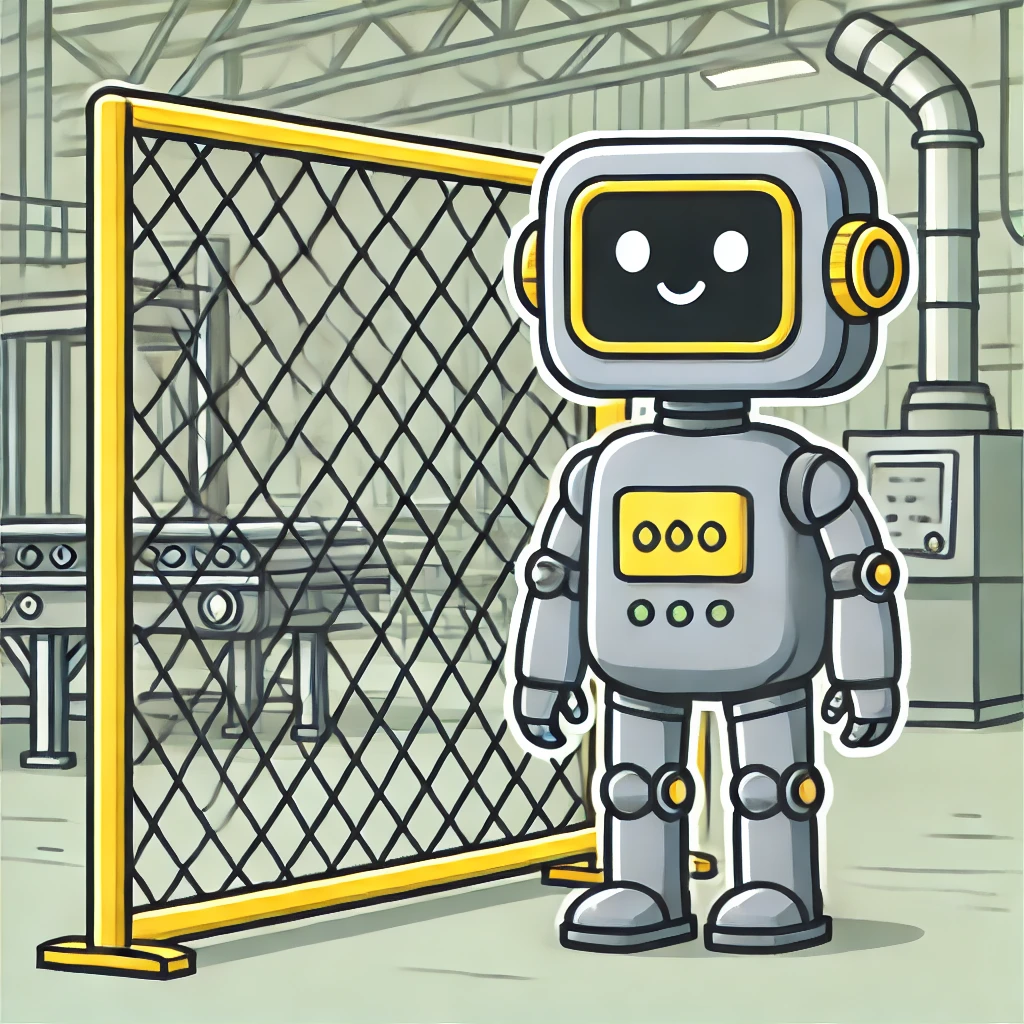The PN-EN ISO 13857:2020-03 standard outlines specific requirements for Minimum Safety Distances in Machine Design, crucial for preventing access to potentially hazardous machine areas. Ensuring safety by restricting reach into danger zones is a fundamental aspect of machine safety. This article delves into key design principles and practical guidance for implementing these requirements in industrial environments.
Table of Contents
Understanding Minimum Safety Distances
Minimum Safety Distances are derived from anthropometric and biomechanical data, considering human body dimension variations. It is essential for design offices to comprehend and appropriately apply these values in their designs. The document pertains to individuals aged 14 and older, also considering children over 3 years in the context of reaching through openings.
Risk Categories
The standard distinguishes between two main risk levels: low and high. When designing protective measures, a thorough risk assessment of the machine is necessary to determine the applicable category:
- Low Risk: Pertains to situations where the threat is limited to minor injuries, such as scratches.
- High Risk: Involves potential risks of severe injuries, such as fractures or amputations.
Minimum Safety Distances for Reaching Upwards
A critical aspect is the proper design of the hazardous zone height in the context of reaching upwards:
- Low Risk: Minimum safety distance should be 2,500 mm.
- High Risk: Minimum safety distance should be 2,700 mm.
Reaching Over Protective Structures and Minimum Safety Distances
The standard specifies requirements for minimum safety distances when reaching over protective structures. To determine appropriate distances, one must refer to the tables in the standard, which precisely define these distances based on the height of the protective structure and potential risk.
Reaching Around Protective Structures
The standard defines requirements for minimum safety distances when reaching around protective structures. These distances must be appropriately designed to prevent access to hazardous zones. The relevant tables in the standard should be used for this purpose.
Reaching Through Openings and Minimum Safety Distances
The standard specifies maximum dimensions for openings in protective structures, such as slots, squares, and circles, to prevent limb access to hazardous zones. These dimensions are defined for various body parts, such as fingertips, fingers, hands, or entire upper limbs, determining the minimum safety distance from the hazardous zone.
Practical Examples
This standard is commonly used for installing enclosures around hazardous zones secured by safety devices like interlocks (known as supervised guards). The types of guards are discussed in the PN-EN 14120 standard. The realization of the safety function depends on the machine’s risk assessment and the frequency of access to the zone. A good example is the use of enclosures with appropriate mesh sizes compliant with PN-EN ISO 13857 in the working area of an industrial robot. The mesh size is specifically designed to prevent access to the hazardous zone and minimize the enclosure’s footprint (up to 120 mm from the hazard). Such enclosures can be installed around any production line with hazardous zones.

Another example includes machine guards with various covers. According to PN-EN ISO 13857:2020-03, if an opening is 20 mm wide, the safety distance from the hazardous zone must be 120 mm to prevent finger insertion under the guard.
- Slot width of 20 mm: Minimum safety distance is 120 mm.
- Opening width of 80 mm: Minimum safety distance is 850 mm.
Protective Structures and Minimum Safety Distances
Protective structures are physical barriers preventing access to hazardous zones. These can include machine guards, barriers, grilles, or other elements that restrict access. The choice of protective structure depends on the machine’s specifics and the analyzed risk.
Additional Protective Structures
In some cases, additional protective structures may be necessary to restrict limb movement, thereby enhancing safety. Examples include double barriers or nets.
Special Requirements for Children and Minimum Safety Distances
The standard also considers special requirements for protecting children who may reach through openings in protective structures. For children over 3 years old, specific minimum safety distances differing from those for adults must be applied.
Monitoring and Maintenance of Protective Structures
Protective structures must be regularly monitored and maintained to ensure their effectiveness. Attention should be paid to any damage, deformation, or wear that could reduce the level of protection.
Safety Costs and Minimum Safety Distances
Safety costs are significant, encompassing machine design, installation, and maintenance of appropriate protective measures. Companies often cut corners on safety, which is detrimental for several reasons. Firstly, it can lead to severe accidents and injuries, which are costly in medical and legal terms. Secondly, poorly designed enclosures can hinder work if not properly planned and selected, reducing operational efficiency and increasing the risk of non-compliance with safety procedures by employees.
Designing protective structures in accordance with PN-EN ISO 13857:2020-03 is crucial for ensuring machine safety. Adhering to safety distance requirements, risk analysis, and regular maintenance of protective structures helps minimize accident risks and enhance workplace safety.

Summary Ensuring appropriate minimum safety distances and using protective structures in accordance with PN-EN ISO 13857:2020-03 is essential for protecting employees from access to hazardous zones. Proper design and maintenance of these protective measures can effectively prevent accidents and safeguard employee health. Safety costs are significant, and companies often try to save on safety, but poorly designed machine guards often hinder work, indicating that designers have not fully thought through the issue.
Industrial Automation and Minimum Safety Distances
Industrial automation plays a crucial role in enhancing efficiency and safety in manufacturing plants. Implementing advanced control and monitoring systems allows for process automation while minimizing risks associated with access to hazardous zones. Utilizing sensors, light curtains, and emergency stop devices can significantly improve operational safety while ensuring compliance with standards such as PN-EN ISO 13857:2020-03.
Industrial Machine Construction and Minimum Safety Distances
Designing and constructing industrial machines must adhere to stringent safety standards to protect operators and other workers from potential mechanical hazards. Industrial machine construction involves various activities, including risk analysis, protective structure design, and security system implementation. Compliance with PN-EN ISO 13857:2020-03 is crucial, as minimum safety distances must be strictly observed. Proper industrial machine design requires:
- Risk Analysis: Identifying potential hazards and assessing risks associated with different machine operations.
- Protective System Design: Considering minimum safety distances in the design of guards, barriers, and other protective structures.
- Industrial Automation Integration: Utilizing advanced control systems that automatically monitor and manage machine safety.
- Regular Maintenance and Inspection: Ensuring all protective systems are fully functional and effective.
The PN-EN ISO 13857:2020-03 standard is harmonized with the Machinery Directive 2006/42/EC, thus working in conjunction with most standards applicable to the construction of special and industrial machines. For example, PN-EN 14120 discusses various types of guards that can be used in conjunction with the safety distance guidelines outlined in PN-EN ISO 13857:2020-03.
FAQ: Minimum Safety Distances
Minimum safety distances are values specified in the PN-EN ISO 13857:2020-03 standard, aimed at preventing access to hazardous zones in machines by restricting reach with upper and lower limbs.
Minimum safety distances are crucial for protecting workers from potential mechanical hazards, such as cuts, crushes, or amputations, by preventing access to hazardous zones.
The standard distinguishes two main risk levels: low and high. Low risk pertains to situations with minor injury threats, while high risk involves potential severe injury risks.
When designing protective systems, consider risk analysis, potential hazard types, and the frequency and method of access to hazardous zones. Proper planning and implementation of protective systems minimize accident risks.
Fixed guards are permanently attached and require tools for removal, making them more suitable for areas with infrequent access needs. Movable guards can be easily opened and closed, beneficial for areas requiring regular access, such as machine retooling.
Each type of protective structure has its pros and cons. For example:
Protective nets: Advantage – flexibility, good visibility of the work area. Disadvantage – may be less durable.
Fixed guards: Advantage – high durability, difficult to remove without tools. Disadvantage – lack of flexibility, difficulty in quick access.
Movable guards: Advantage – easy and quick access to the work area. Disadvantage – may be manipulated or bypassed by workers if not properly designed and monitored.
The standard is most commonly applied in installing enclosures around hazardous zones, secured by safety devices like interlocks (supervised guards). It is also used in designing enclosures for industrial robot work areas and machine guards.
The standard considers special requirements for protecting children over 3 years old if reaching through openings may occur. For children over 3 years old, specific minimum safety distances differing from those for adults must be applied.
Safety costs include machine design, installation, and maintenance of appropriate protective measures. While these costs are significant, cutting corners on safety can lead to severe accidents and injuries, which are costly in medical and legal terms.
Protective structures must be regularly monitored and maintained to ensure their effectiveness. Attention should be paid to any damage, deformation, or wear that could reduce the level of protection.
